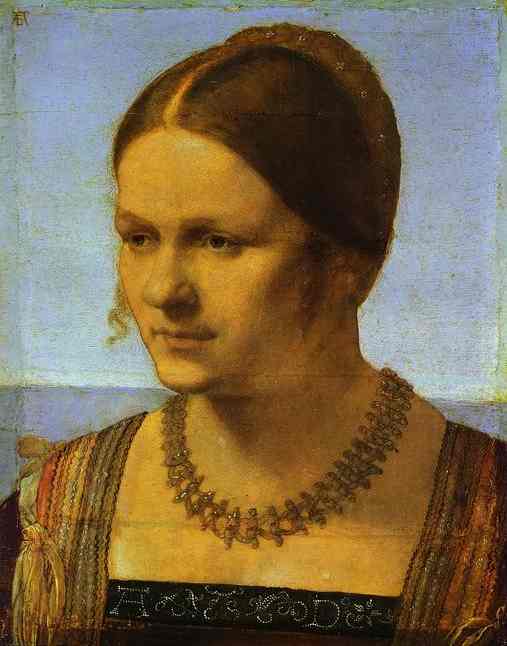
   |
[Misc] (Top 100 Paintings - 049) Portrait of a Young Venetian Woman by Albrecht Durer
최고관리자 | 20-09-11 00:23

(1) "Write 2 Speak 전체 목록 & 모든 콘텐츠"를 보시려면 "Write 2 Speak = 유튜브 채널"에
가입(subscribe - 클릭)후 "본인의 유튜브 ID & Write2Speak 등록 ID"를 "write2speak@daum.net"로
이메일로 보내 주시면 확인 후 본 사이트 정회원으로 등급됩니다. 많은 신청 기다리겠습니다.
(2) 참고로, "Write 2 Speak"에 올라오는 유튜브 contents는 정기적으로 삭제가 되며, "전체 내용"을 보시려면
위에 절차를 따라야만 "Write 2 Speak -> 자료실(클릭)"영역에서 모든 내용을 다시 볼 수 있습니다.
****************************************************************************************
Portrait of a Young Venetian Woman by Albrecht Durer
Portrait of a Young Venetian Woman is a small bust length oil on elm panel painting by the German artist Albrecht Dürerfrom 1505. It was executed, along with a number of other high society portraits, during his second visit to Italy.
The woman wears a patterned gown with tied-on sleeves that show the chemise beneath. Her hair frames her face in soft waves, and back hair is confined in a small draped cap. The work's harmony and grace is achieved through its mixtures of tones, from her pale, elegant skin and reddish blond hair and to her black-and pearl necklace and highly-fashionable patterned dress all of which are highlighted against a flat black background. It is similar in pose and colour tone to his c 1507 A German Woman from Venice, while at least two studies of Venetian women are known, both of which are very daring. One shows the model with a plunging neckline, the other with bare shoulders.
During his visit to Italy Dürer became fascinated by and befriended Giovanni Bellini, an established master when Dürer was still a relative unknown outside of Germany. The Franconian artist's influence can be seen in this work's soft modeling, dramatic lighting and vivid colours and tones.
The work was not identified as a Dürer original until it was found in a privateLithuanian collection in 1923. The identity of the sitter is lost, however in dress and hairstyle she appears to be Venetian rather than Germanic. The portrait is unfinished a number of elements, noticeably the black bow above her chest, are not as well described as other passages.
   |




